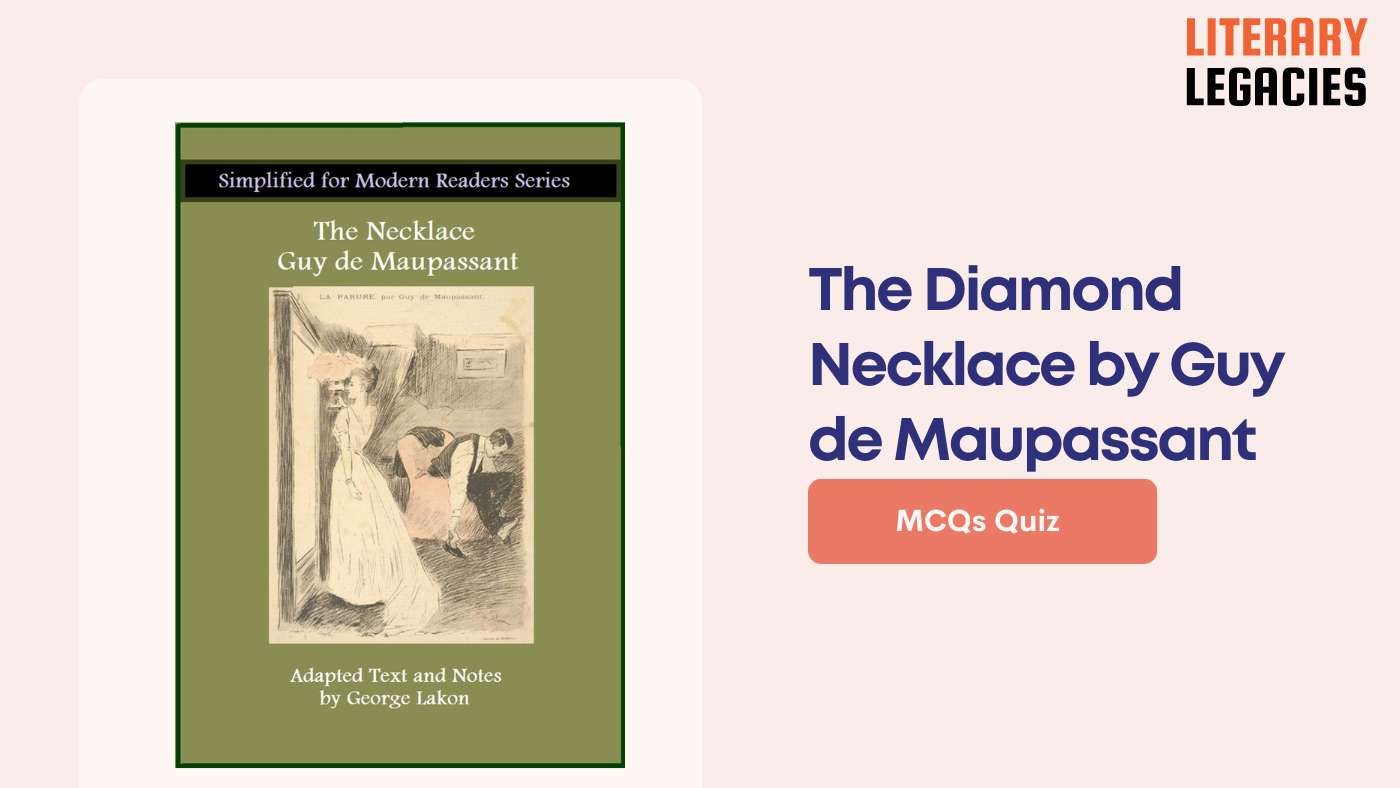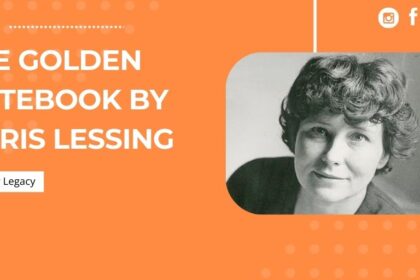1. Why does Mathilde behave oddly as the day of the party approaches?
A. She is anxious about meeting Madame Forestier
B. She is worried about Monsieur Loisel’s behavior
C. She lacks jewels to wear
D. She is worried about her dress
Answer: She lacks jewels to wear (C)
Mathilde’s odd behavior is due to her lack of jewels.
2. What does Monsieur Loisel suggest Mathilde do when she refuses to wear flowers?
A. Visit Madame Forestier to borrow jewels
B. Wear a scarf to hide her bare neck
C. Visit a jeweler to buy her own necklace
D. Attend the party without jewelry
Answer: Visit Madame Forestier to borrow jewels (A)
Monsieur Loisel suggests that Mathilde visit Madame Forestier to borrow jewels.
3. What is Mathilde’s reaction when she visits Madame Forestier and borrows a diamond necklace?
A. She is annoyed at Madame Forestier’s generosity
B. She is hesitant and unsure
C. She is overcome with gratitude
D. She is suspicious of Madame Forestier’s intentions
Answer: She is overcome with gratitude (C)
Mathilde is overwhelmed with gratitude at Madame Forestier’s generosity.
4. What happens when Mathilde removes her wrap at home after the party?
A. She finds a note from Monsieur Loisel
B. She finds the necklace in her wrap
C. She discovers her necklace is missing
D. She realizes she has misplaced her wrap
Answer: She discovers her necklace is missing (C)
Mathilde discovers that the necklace is no longer around her neck.
5. How do the Loisels eventually replace the necklace?
A. They make their own necklace
B. They find the original necklace
C. They borrow another necklace from Madame Forestier
D. They buy a similar necklace from a jeweler
Answer: They buy a similar necklace from a jeweler (D)
The Loisels find a similar necklace from a jeweler and purchase it.
6. What is the price of the new necklace that the Loisels purchase?
A. 30,000 francs
B. 40,000 francs
C. 36,000 francs
D. 50,000 francs
Answer: 36,000 francs (C)
The jeweler agrees to sell the necklace for 36,000 francs.
7. What is the outcome of the Loisels’ financial struggles?
A. They live a life of poverty for ten years
B. They move to a bigger apartment
C. They become wealthy again
D. They lose their servant
Answer: They live a life of poverty for ten years (A)
The Loisels live a life of crippling poverty for ten years.
8. How does Madame Forestier react when Mathilde explains the story of the necklace?
A. She empathizes with Mathilde’s situation
B. She reveals that the original necklace was costume jewelry
C. She is annoyed at Mathilde’s mistake
D. She is surprised at the necklace’s value
Answer: She reveals that the original necklace was costume jewelry (B)
Madame Forestier reveals that the original necklace was just costume jewelry.
9. What is the eventual outcome of Mathilde’s beauty?
A. Her beauty is now gone, and she looks like the other women of poor households
B. She becomes even more beautiful
C. She becomes ugly
D. She stays the same as before
Answer: Her beauty is now gone, and she looks like the other women of poor households (A)
Mathilde’s extraordinary beauty is gone, and she looks like the other women of poor households.
10. How long does it take the Loisels to repay their debts?
A. 5 years
B. 10 years
C. 15 years
D. 20 years
Answer: 10 years (B)
The Loisels take 10 years to repay their debts.
11. What is the main reason Mathilde is unhappy with her life?
A. She is not married to a wealthy man
B. She does not have a job
C. She feels she has been born into a family of unfavorable economic status
D. She is not allowed to attend parties
Answer: She feels she has been born into a family of unfavorable economic status (C)
Mathilde’s poverty and lack of luxury goods contribute to her feelings of unhappiness.
12. What is the difference between Mathilde’s lifestyle and the one she dreams of?
A. Mathilde’s lifestyle is comfortable, but she dreams of a poor one
B. Mathilde’s lifestyle is extravagant, but she dreams of a modest one
C. Mathilde’s lifestyle is unhappy, but she dreams of a happy one
D. Mathilde’s lifestyle is modest, but she dreams of an extravagant one
Answer: Mathilde’s lifestyle is modest, but she dreams of an extravagant one (D)
Mathilde’s lifestyle is modest, but she dreams of an extravagant one with fancy jewels and clothing.
13. What does Mathilde’s husband bring home one night?
A. A pair of fancy shoes
B. A new dress
C. A box of chocolates
D. An invitation to a formal party
Answer: An invitation to a formal party (D)
Mathilde’s husband brings home an invitation to a formal party hosted by the Ministry of Education.
14. Why does Mathilde refuse to visit Madame Forestier?
A. Because visiting Madame Forestier brings her heartbreak
B. Because Madame Forestier is not a good friend
C. Because Madame Forestier is poor and Mathilde feels sorry for her
D. Because Madame Forestier is rich and Mathilde is jealous
Answer: Because visiting Madame Forestier brings her heartbreak (A)
Mathilde refuses to visit Madame Forestier because it brings her heartbreak, reminding her of her own poverty.
15. What is the amount of money Mathilde’s husband agrees to give her for a new dress?
A. 500 francs
B. 400 francs
C. 300 francs
D. 200 francs
Answer: 400 francs (B)
Mathilde’s husband agrees to give her 400 francs for a new dress.
16. What is the main reason Mathilde’s husband is upset?
A. Because Mathilde does not appreciate what he has done for her
B. Because Mathilde wants to buy a new dress
C. Because Mathilde cries when he brings home the invitation
D. Because Mathilde is unhappy with her life
Answer: Because Mathilde cries when he brings home the invitation (C)
Mathilde’s husband is upset because she cries when he brings home the invitation to the formal party.
17. What is Mathilde’s attitude towards her husband’s modest lifestyle?
A. She is indifferent to it
B. She is grateful for it
C. She regrets it
D. She is angry about it
Answer: She regrets it (C)
Mathilde regrets her husband’s modest lifestyle and dreams of a more extravagant one.
18. What does Mathilde imagine in her daydreams?
A. A life of simplicity and humility
B. A life of poverty and hardship
C. A life of extravagance and luxury
D. A life of isolation and loneliness
Answer: A life of extravagance and luxury (C)
Mathilde imagines a life of extravagance and luxury, with fancy jewels and clothing.
19. What is the profession of Mathilde’s husband?
A. A teacher in a school
B. A clerk in the Ministry of Education
C. A businessman in a company
D. A doctor in a hospital
Answer: A clerk in the Ministry of Education (B)
Mathilde’s husband is a clerk in the Ministry of Education.
20. What is the characteristic of Mathilde’s husband that is mentioned in the passage?
A. He is quiet and understanding
B. He is wealthy and generous
C. He is proud and humble
D. He is poor and unhappy
Answer: He is quiet and understanding (A)
Mathilde’s husband is quiet and understanding, as evidenced by his reaction to her request for a new dress.
21. What is the reality of Mathilde’s situation?
A. She is more beautiful than she thinks she is.
B. She is neither wealthy nor part of the social class she feels she deserves.
C. She is wealthy and part of the social class she feels she deserves.
D. She is poorer than she thinks she is.
Answer: She is neither wealthy nor part of the social class she feels she deserves. (B)
Mathilde’s actual life does not match the ideal life she has in her head.
22. Why is the party a triumph for Mathilde?
A. Because for the first time, her appearance matched the reality of her life.
B. Because she finally got the life she wanted.
C. Because she was the center of attention.
D. Because she wore a beautiful dress.
Answer: Because for the first time, her appearance matched the reality of her life. (A)
Her life, in the few short hours of the party, is as she feels it should be.
23. What is the significance of Madame Forestier’s necklace?
A. It highlights the deceptiveness of appearances.
B. It represents Mathilde’s social status.
C. It is a symbol of Mathilde’s wealth.
D. It is a symbol of Mathilde’s beauty.
Answer: It highlights the deceptiveness of appearances. (A)
The necklace appears to be made of diamonds but is actually nothing more than costume jewelry.
24. What is the struggle that Mathilde faces?
A. She struggles to make friends.
B. She struggles to be content with her life.
C. She struggles to accept her poverty.
D. She struggles to reconcile her ideal life with her actual life.
Answer: She struggles to reconcile her ideal life with her actual life. (D)
Mathilde lives in an illusory world where her actual life does not match the ideal life she has in her head.
25. What is the truth about Mathilde’s appearance?
A. Her appearance is always deceiving.
B. Her appearance took a great deal of scheming and work.
C. Her appearance is always natural.
D. Her appearance is always genuine.
Answer: Her appearance took a great deal of scheming and work. (B)
Her wealth and class are simply illusions, and other people are easily deceived.
26. What is the illusion that Mathilde creates?
A. That she is unhappy with her life.
B. That she is beautiful.
C. That she is poor.
D. That she is wealthy and part of a higher social class.
Answer: That she is wealthy and part of a higher social class. (D)
Mathilde does everything in her power to make her life appear different from how it is.
27. What is the main theme of the passage?
A. The power of beauty.
B. The struggle for wealth.
C. The importance of honesty.
D. The deceptiveness of appearances.
Answer: The deceptiveness of appearances. (D)
The passage highlights the deceptiveness of appearances.
28. What is the result of Mathilde’s effort to create an illusion?
A. She becomes unhappy with her life.
B. She deceives other people easily.
C. She becomes more beautiful.
D. She becomes content with her life.
Answer: She deceives other people easily. (B)
Her wealth and class are simply illusions, and other people are easily deceived.
29. What is Mathilde’s attitude towards her life?
A. She is content with her life.
B. She is indifferent to her life.
C. She is unhappy with her life.
D. She is proud of her life.
Answer: She is unhappy with her life. (C)
Mathilde lives in an illusory world where her actual life does not match the ideal life she has in her head.
30. What is the significance of Mathilde’s beauty?
A. It is a symbol of her social status.
B. It is a source of her self-worth.
C. It is a symbol of her wealth.
D. It is a means to an end.
Answer: It is a source of her self-worth. (B)
She believes that her beauty and charm make her worthy of greater things.
31. What is the significance of the fact that the diamonds in the necklace are fake?
A. It reveals the true character of Madame Forestier.
B. It showcases Mathilde’s ability to appreciate fine jewelry.
C. It emphasizes the importance of wealth and social status.
D. It highlights theTheme of deception and appearances in the story.
Answer: It highlights theTheme of deception and appearances in the story. (D)
The diamonds being fake emphasizes the theme of deception and appearances in the story.
32. What is the main characteristic of Mathilde’s perception of herself?
A. She is humble and appreciative of what she has.
B. She is materialistic and only cares about wealth.
C. She is selfLESS and content with her life.
D. She is a martyr and deserves a better life.
Answer: She is a martyr and deserves a better life. (D)
Mathilde perceives herself as a martyr, believing she deserves a better life.
33. What is the outcome of Mathilde’s belief in the power of objects to change her life?
A. She becomes more selfish and demanding.
B. She becomes more materialistic and obsessed with wealth.
C. She becomes content with her life and appreciates what she has.
D. She learns to appreciate the beauty within herself.
Answer: She becomes more materialistic and obsessed with wealth. (B)
Mathilde becomes more materialistic and obsessed with wealth, believing that objects can change her life.
34. What is the significance of the Loisels living on the Rue des Martyrs?
A. It showcases the Loisels’ contentment with their life.
B. It highlights the theme of deception and appearances in the story.
C. It symbolizes Mathilde’s perception of herself as a martyr.
D. It emphasizes the importance of wealth and social status.
Answer: It symbolizes Mathilde’s perception of herself as a martyr. (C)
The Loisels living on the Rue des Martyrs symbolizes Mathilde’s perception of herself as a martyr.
35. How does Mathilde’s perception of herself change after she loses the necklace?
A. Her perception of herself as a martyr intensifies.
B. She becomes more humble and appreciative of what she has.
C. She becomes more materialistic and obsessed with wealth.
D. She becomes more selfish and demanding.
Answer: Her perception of herself as a martyr intensifies. (A)
Mathilde’s perception of herself as a martyr intensifies after she loses the necklace.
36. What is the significance of Monsieur Loisel’s sacrifices in the story?
A. It showcases Monsieur Loisel’s ability to make sacrifices for his own desires.
B. It emphasizes the importance of wealth and social status.
C. It highlights Mathilde’s selfishness and lack of appreciation.
D. It reveals Monsieur Loisel’s true character as a martyr.
Answer: It reveals Monsieur Loisel’s true character as a martyr. (D)
Monsieur Loisel’s sacrifices reveal his true character as a martyr, constantly sacrificing his desires for Mathilde’s sake.
37. What is the outcome of Mathilde’s obsession with the trappings of the wealthy?
A. She becomes more humble and grateful for her husband’s love.
B. She learns to appreciate the beauty within herself.
C. She becomes content with her life and appreciates what she has.
D. She becomes more materialistic and obsessed with wealth.
Answer: She becomes more materialistic and obsessed with wealth. (D)
Mathilde becomes more materialistic and obsessed with wealth, perpetuating her discontent.



